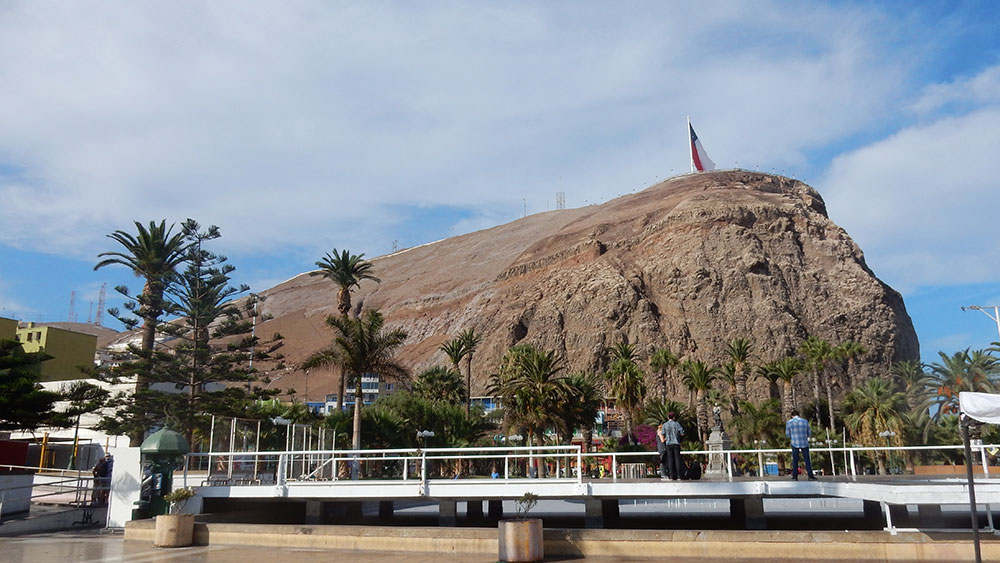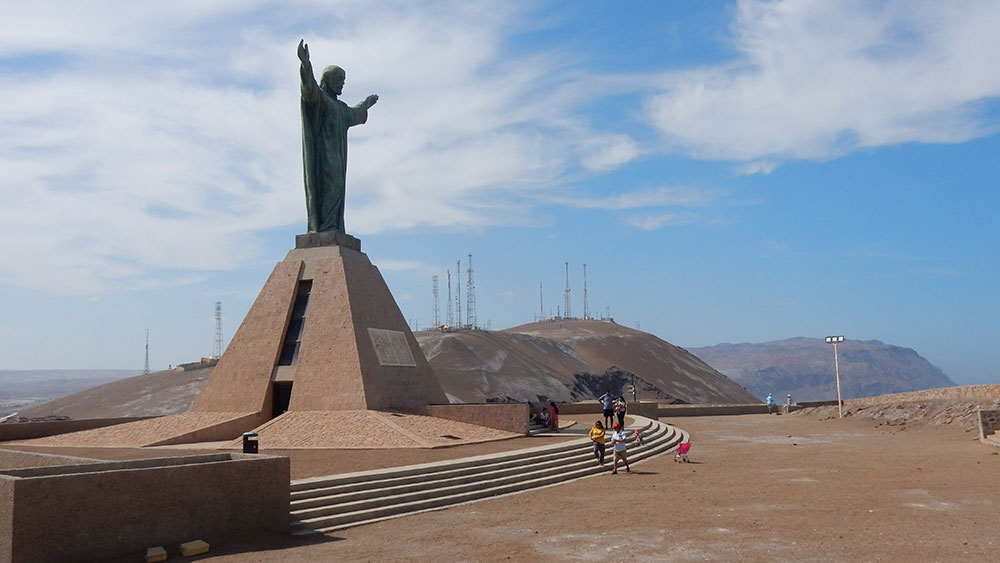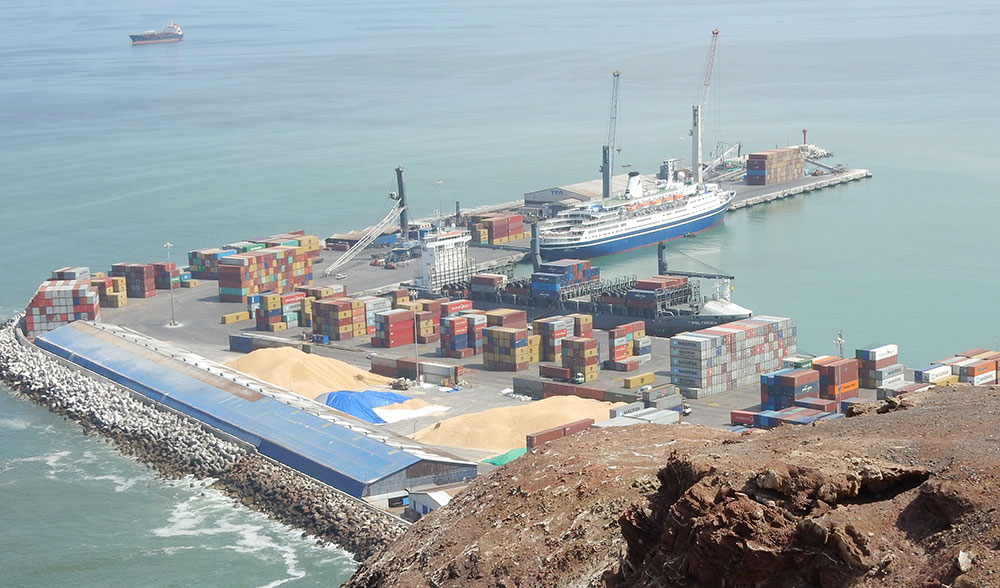ARICA, CHILE
Today, we arrived in Arica, the most Northerly city in Chile, only 11 miles from the border with Peru, at the point where South America bends outwards into the Pacific Ocean.
Since we were not on tour today, there was no need to be up early. It was quite a shock, then, at just gone 7:30am, to hear a light knocking on the door, followed immediately by the door being unlocked and – shock horror – opened…. it was the plummer!
‘We’re not up yet!’ I called out, and the plummer retreated.
So much for a lie-in.
After breakfast, we were down in the cabin getting our things together to go outside for a walk, when there was yet another knock on the door. Thinking it might be the plummer again, I went to open it, and the Cabin Steward Boss-lady stood there, explaining that they were cleaning the carpets. We told here we would just be a few minutes; once we were sorted, we were out of there.
Stepping outside was like opening an oven door. Arica has one of the lowest annual rainfall recorded in the world, and is surrounded by desert and shimmering sandy hills. Serving as a free port to a large inland region of the continent, Arica serves trade to and from Bolivia, and because of its strategic location, has a turbulent history. It’s location, on the Peru-Chile Trench, where the Nazca Plate dives beneath the South American Plate, also makes it susceptible to earthquakes.


The city is dominated by a large hill, called the Morro de Arica, up the side of which a footpath gives relatively easy access to the top. So, after taking a walk around the central square and inside the Cathedral of San Marcos (which was actually quite an unusual construction, and interesting to look at), we headed for the footpath to start our climb…
Pausing every now and then to catch our breath (did I mention the heat?), we also took the opportunity to photograph the expansive views across the city. With the desert backdrop an the low buildings (there were only two or three buildings over a couple of stories high in the whole of the city), it looked hot.


At the top of the hill, the views are even more impressive. There are also several monuments and statues, the largest of which is a statue of Christ, similar to that which we saw in Rio (but not as big), and a flag as big as a football pitch. We had planned to head for the beach in the afternoon, but when we looked down to it from the cliff top above, we really didn’t fancy it. It looked muddy, and not too pleasant, and we’d also heard that it is quite polluted.

All-in-all, the climb had been worth it; the views were extensive and the climb down much easier than the climb up.
Back at street level, we continued to explore around the plaza area for a bit, until we decided it was coming up to lunchtime, so we headed back to the ship. Having dumped the idea of a beach break, we spent the afternoon catching-up on the internet.
When we got back to our cabin, the first thing we noticed was that the carpet was wet. For sure; it looked clean… but it squelched underfoot.
This evening, the clocks go back one hour, as we head West along the coastline, towards our next port of call, Callao (Lima) in two days time.

